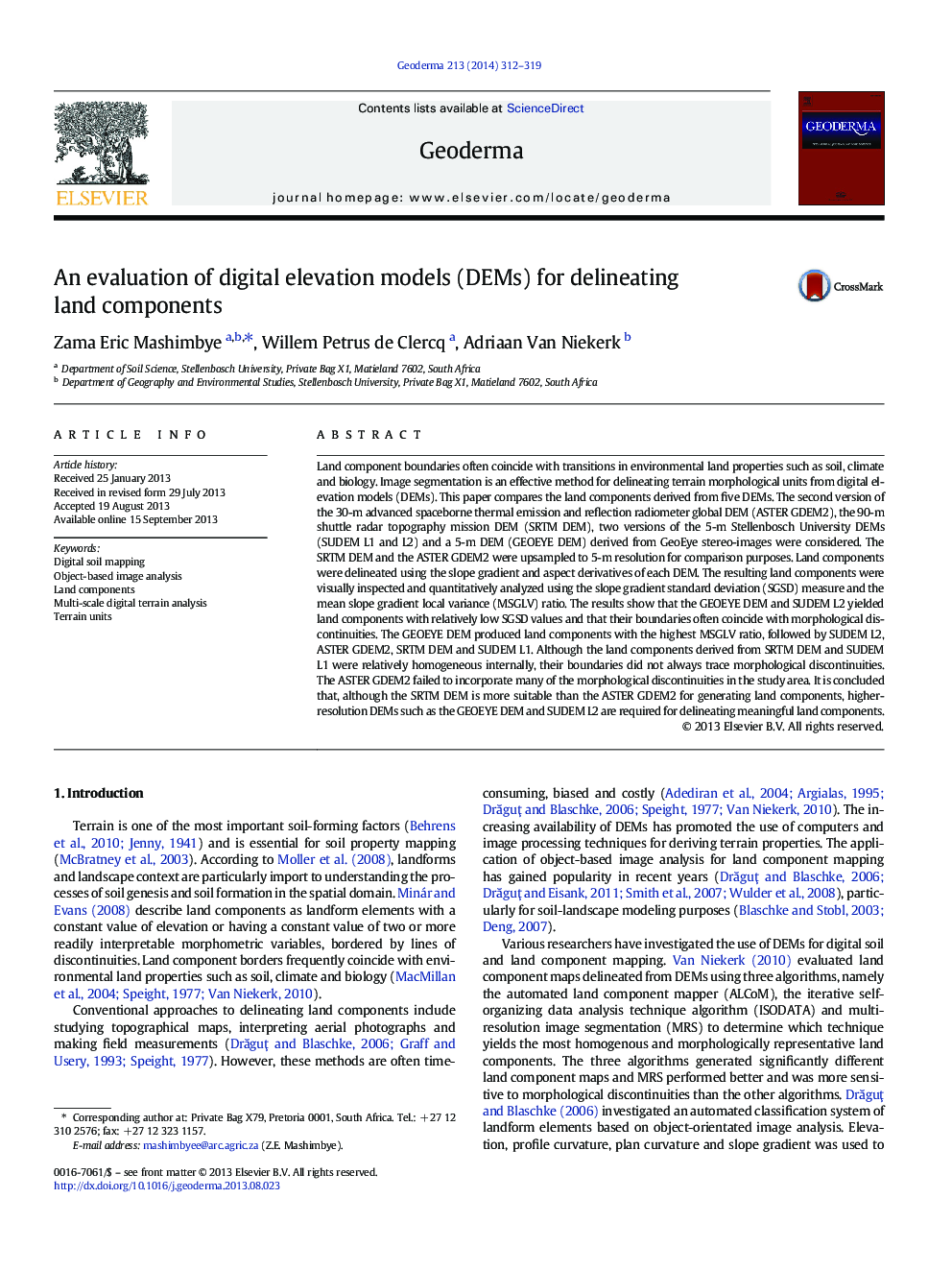| کد مقاله | کد نشریه | سال انتشار | مقاله انگلیسی | نسخه تمام متن |
|---|---|---|---|---|
| 6408981 | 1629479 | 2014 | 8 صفحه PDF | دانلود رایگان |

- We developed a novel mean slope gradient local variance (MSGLV) ratio.
- The MSGLV is a reliable measure to assess land component accuracy.
- Higher resolution DEMs generally yielded more accurate land component boundaries.
- The SRTM DEM produced more accurate land components than the ASTER GDEM.
- The SUDEM produced the most accurate land components of the DEMs tested.
Land component boundaries often coincide with transitions in environmental land properties such as soil, climate and biology. Image segmentation is an effective method for delineating terrain morphological units from digital elevation models (DEMs). This paper compares the land components derived from five DEMs. The second version of the 30-m advanced spaceborne thermal emission and reflection radiometer global DEM (ASTER GDEM2), the 90-m shuttle radar topography mission DEM (SRTM DEM), two versions of the 5-m Stellenbosch University DEMs (SUDEM L1 and L2) and a 5-m DEM (GEOEYE DEM) derived from GeoEye stereo-images were considered. The SRTM DEM and the ASTER GDEM2 were upsampled to 5-m resolution for comparison purposes. Land components were delineated using the slope gradient and aspect derivatives of each DEM. The resulting land components were visually inspected and quantitatively analyzed using the slope gradient standard deviation (SGSD) measure and the mean slope gradient local variance (MSGLV) ratio. The results show that the GEOEYE DEM and SUDEM L2 yielded land components with relatively low SGSD values and that their boundaries often coincide with morphological discontinuities. The GEOEYE DEM produced land components with the highest MSGLV ratio, followed by SUDEM L2, ASTER GDEM2, SRTM DEM and SUDEM L1. Although the land components derived from SRTM DEM and SUDEM L1 were relatively homogeneous internally, their boundaries did not always trace morphological discontinuities. The ASTER GDEM2 failed to incorporate many of the morphological discontinuities in the study area. It is concluded that, although the SRTM DEM is more suitable than the ASTER GDEM2 for generating land components, higher-resolution DEMs such as the GEOEYE DEM and SUDEM L2 are required for delineating meaningful land components.
Journal: Geoderma - Volume 213, January 2014, Pages 312-319